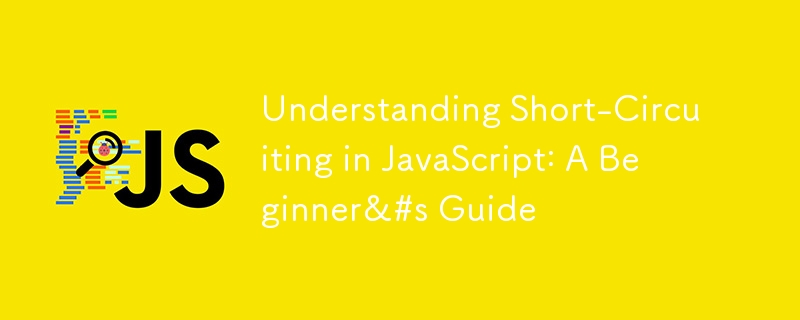
When you first start learning JavaScript, you quickly realize that there’s more to writing code than just getting it to work. One powerful concept that often flies under the radar for beginners is "short-circuiting." It’s an important feature of logical operations in JavaScript that can make your code more efficient and readable. So, what exactly is short-circuiting, and how does it work?
Short-circuiting occurs in logical operations where the second operand is not evaluated if the first operand already determines the outcome of the operation. In simpler terms, if the result of a logical operation can be determined by the first value, JavaScript won’t even bother checking the second one.
JavaScript has two logical operators that support short-circuiting:&& (AND) and || (OR).
The && operator checks if both sides of the expression are true. However, if the first operand is false, there’s no need to check the second one, because the result will be false regardless.
Example:
const isLoggedIn = false; const hasAccess = isLoggedIn && someFunction(); console.log(hasAccess); // false
In the example above, someFunction() will never be called because isLoggedIn is false. JavaScript knows the entire expression is false without evaluating the second part.
The || operator checks if at least one of the sides is true. If the first operand is true, the entire expression is true, so the second operand isn’t evaluated.
Example:
const userRole = 'admin'; const role = userRole || 'guest'; console.log(role); // 'admin'
Here, userRole is already truthy ('admin'), so JavaScript doesn’t even look at 'guest'. The value of role is 'admin'.
Short-circuiting isn’t just a neat trick; it’s a practical tool for writing cleaner and more efficient code. Here are a few ways you might use it:
1. Default Values:
const name = inputName || 'Guest';
If inputName is empty or null, name will default to 'Guest'.
2. Guarding Function Calls:
user && user.sendMessage('Hello!');
This ensures sendMessage is only called if user exists.
3. Lazy Evaluation:
const result = complexCondition && performExpensiveOperation(); const result = complexCondition && performExpensiveOperation();
If complexCondition is false, the expensive operation is skipped, saving resources.
Short-circuiting might seem like a small detail, but understanding it can lead to more efficient and readable code. It’s a concept that you’ll encounter frequently in JavaScript, so getting comfortable with it early on will make you a stronger developer. Try experimenting with it in your own projects—you’ll likely find it comes in handy more often than you think!
Remember, the magic of short-circuiting lies in its simplicity. It lets JavaScript do just enough work to get the job done, no more, no less. And as a developer, learning to leverage that simplicity will serve you well. Happy coding!
以上是Understanding Short-Circuiting in JavaScript: A Beginner&#s Guide的詳細內容。更多資訊請關注PHP中文網其他相關文章!




